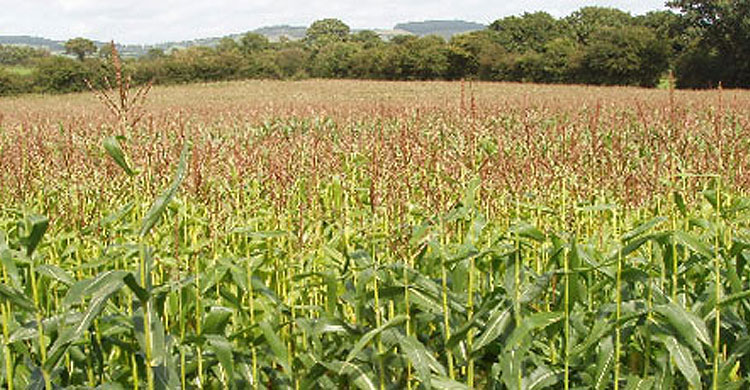
Dr Kingston Mashingaidze and Water Efficient Maize for Africa are breeding and engineering new drought-resistant maize cultivars. Image by David Hawgood.
Maize suited to the African climate
A new drought-tolerant GM maize variety might be on African farmers’ fields as early as 2017.
About six years ago, agri-business giant Monsanto donated, royalty-free, a promising drought-tolerance gene to the Water Efficient Maize for Africa (WEMA) research project. Now, researchers are conducting confined field trials with the first of the resulting transgenic maize hybrids in Lutzville in the Western Cape.
WEMA is an international public-private partnership that brings together researchers, agri-business and funders to produce drought-tolerant maize cultivars for African farmers.
It was formed in 2008 and consists of national agricultural organisations, as well as the African Agricultural Technology Foundation (AATF), the International Maize and Wheat Improvement Center (CIMMYT), and Monsanto. South Africa, Kenya, Mozambique, Tanzania and Uganda are all involved in the project.
According to WEMA’s Dr. Kingstone Mashingaidze, who is also with the Agricultural Research Council’s Grain Crops Institute (ARC-GCI), early results from the Lutzville field trials are promising. “We’ve found that the transgene imparts drought tolerance without reducing yields under non-drought conditions,” he says.
In July 2014, the ARC and Monsanto submitted an application for the commercial release of this drought-tolerant transgene – all things going to plan, it should be approved for commercial use by 2015, and GM varieties available to farmers by 2017.
These cultivars will be the first commercial transgenic crops created in Africa by African scientists, and they will aid food security on the continent.
Despite the positive outlook for WEMA, says Mashingaidze, the programme is not immune to the global controversy surrounding genetically modified organisms (GMOs), and has been targeted by anti-GMO activists.
The last thing Mashingaidze wants is for local farmers to suffer as a result of the controversy. WEMA’s response is to provide farming communities with information about the transgenic maize being developed. Farmer exchanges and community meetings have also been arranged to garner support for the project.
But besides genetic modification, WEMA researchers do use conventional breeding methods to create other improved cultivars, several of which have shown commercial potential.
“I’m happy to say that we have just released the first two WEMA hybrids for South Africa, registered with the Department of Agriculture, Forestry and Fisheries (DAFF),” says Mashingaidze. “We also have about 2000 experimental maize hybrids still in testing, and we’ve developed 260 permanent breeding lines.”
In October, WEMA submitted applications to the DAFF for another 10 conventionally-bred hybrids. These are expected to gain approval for commercial use by September or October next year.
He explains that the process of developing new breeds and cultivars is very slow, and that promising crops must then be grown under strictly controlled conditions for at least two seasons, in two different sites.
“There are no shortcuts,” says Mashingaidze, “but I’m waiting for the day when we can give smallholder farmers maize that is drought-tolerant, at a price comparable to conventional varieties.”
Dr. Kingstone Mashingaidze is Research Team Manager for Plant Breeding at the ARC- Grain Crops Institute in Potchefstroom. He is the South African country coordinator and principal investigator of WEMA and the Improved Maize for African Soils (IMAS) project.